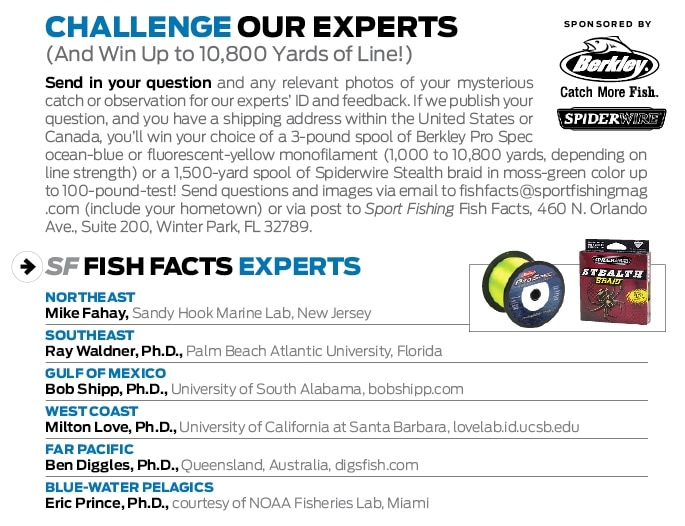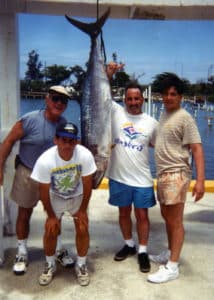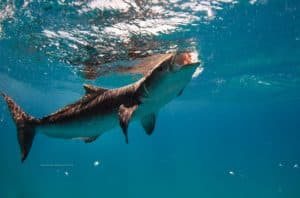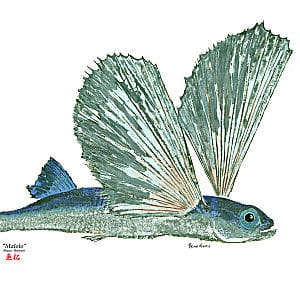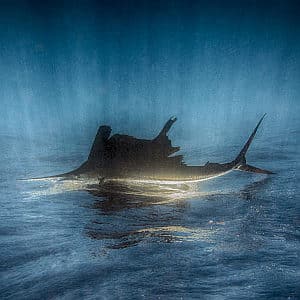In each issue of Sport Fishing magazine, a panel of five international expert ichthyologists identifies unusual and often amazing fishes in photos submitted by readers. Below you’ll find the I.D. and information for a few interesting catches from far and wide.
WHO KNOWS THE FLAPNOSE?
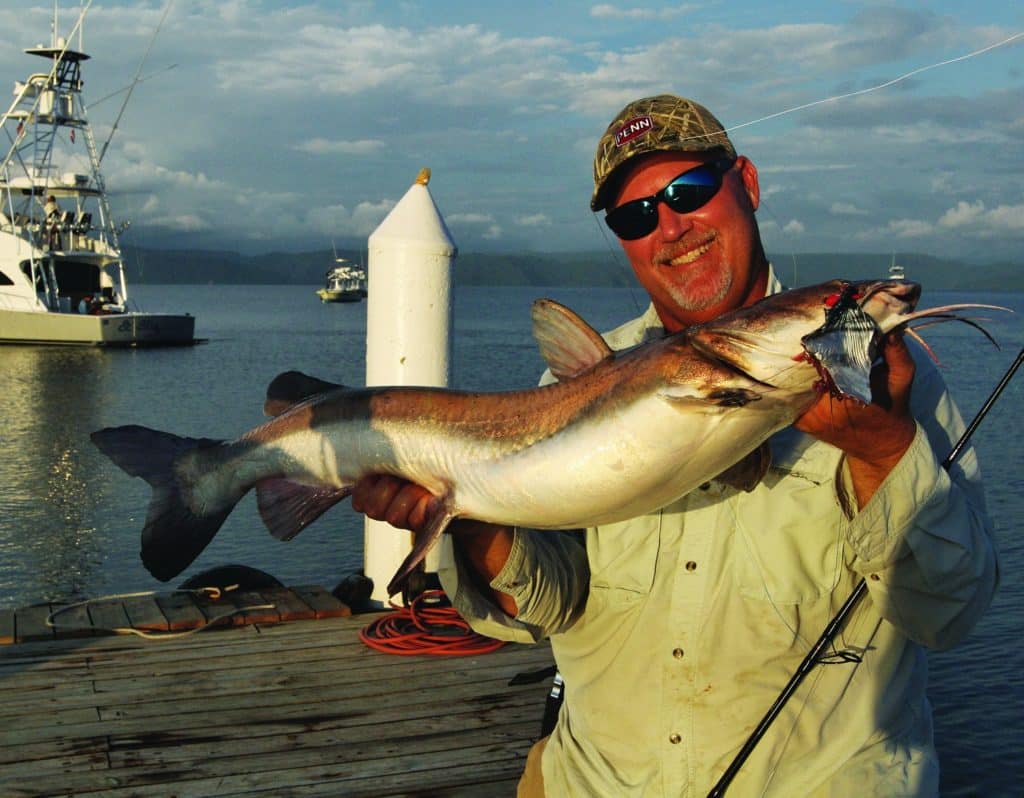
Sam Hudson
Orlando, Florida Sam Hudson / Sport Fishing
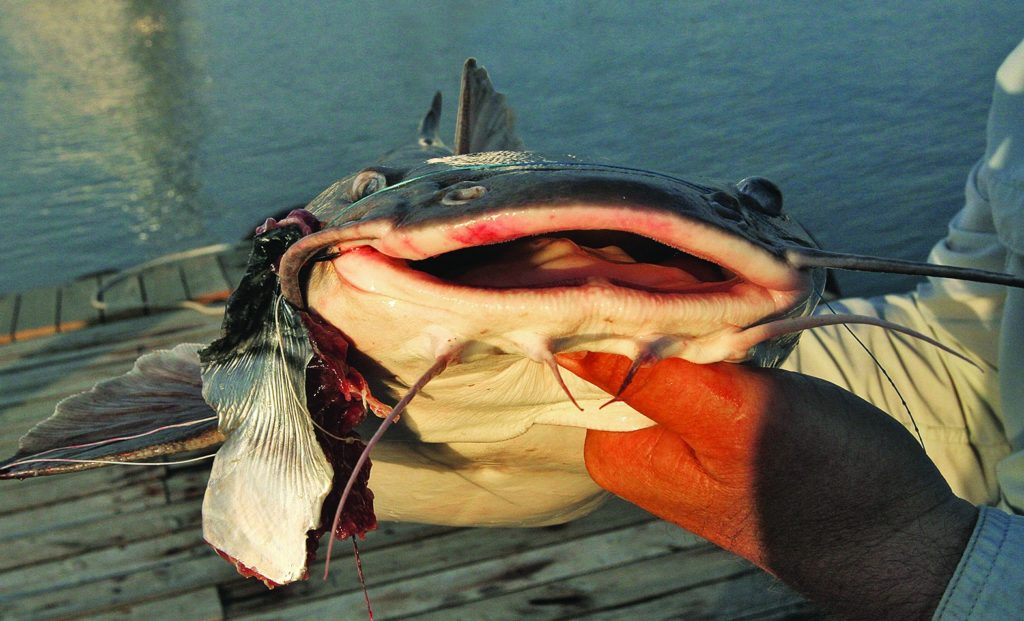
ANSWER: That whiskered beauty is Sciades dowii, the flapnose sea catfish. While there are a number of catfish species off Costa Rica, the one you caught is brassy-brown with really thick whiskers, both characteristics of this species. The flapnose is a tropical catfish that lives in the shallows of rivers and brackish parts of the sea from at least southern Mexico to northern Peru. The habitat in which you caught it — a quiet bay with muddy bottom — is perfect for these bottom-feeding fish because they spend most of their time either stalking small fish or rooting around in the mud for small invertebrates like crabs and shrimp. As far as eating qualities are concerned, flapnoses are caught all along their range and sold fresh and salted, so I guess they’re at least marginally acceptable as table fare. One note: The largest flapnose on record is about 35 inches long, and this fish looks like it might be larger than that. In any case, since no one has yet entered the species with the IGFA for an all-tackle record, this could have been it. Next one!
— Milton Love
HALF-BREED SNAPPER
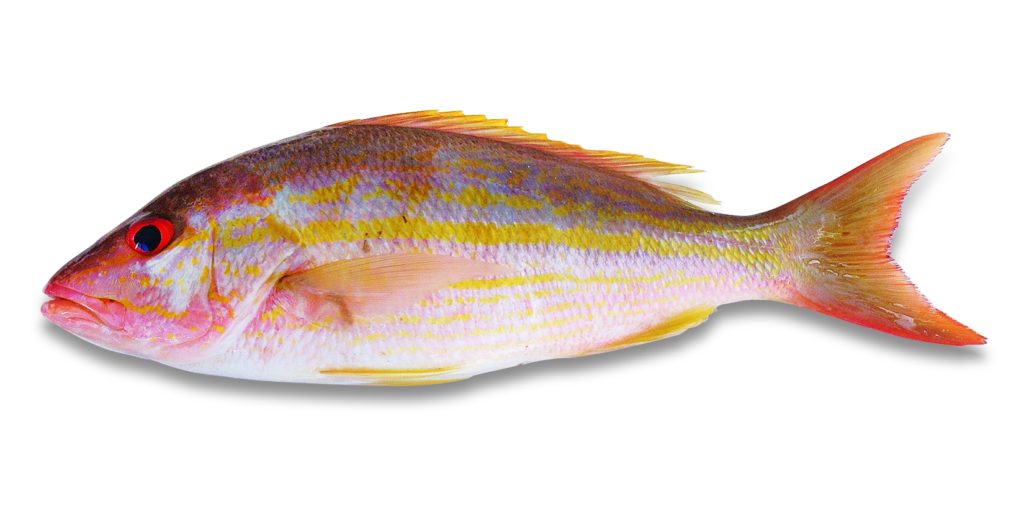
Vic Gaspeny
Tavernier, Florida Vic Gaspeny
ANSWER: It’s often difficult to ascertain whether a fish is a hybrid, especially on the sole basis of photographs, Vic. Still, your catch appears to have characteristics of both lane snapper (Lutjanus synagris) and yellowtail snapper (Ocyurus chrysurus), and in fact, the production of hybrids by these two parental species is well documented. The lane-yellowtail snapper hybrid, first described by Felipe Poey in 1860, was originally considered a unique species: Mesoprion (Lutjanus) ambiguus. Workers following Poey sometimes referred to this fish as the “Cuban snapper” or “Cuban gray snapper.” However, an analysis of wild-caught snappers by William Loftus, as well as laboratory breeding studies by M. Domeier and M. Clark, all published in 1992, showed conclusively that lane and yellowtail snapper can successfully hybridize. Furthermore, Domeier and Clark suggested that yellowtail snapper and gray snapper (L. griseus) might also interbreed, resulting in the production of yet another hybrid. Dr. Cynthia Toth, Jessica Pinder and I are in the process of analyzing the protein complement and DNA sequences of the lane-yellowtail snapper hybrid, and are comparing these data to those obtained from the parental species in hopes of determining how genetically or biochemically similar the hybrid is to each of its parental stocks.
— Ray Waldner
ROCK MY SEA BASS
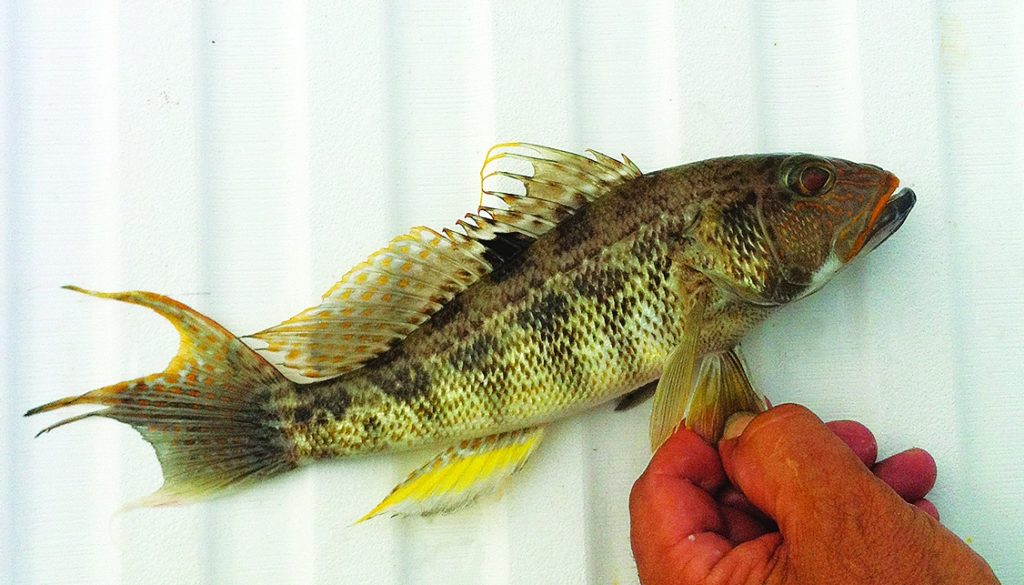
New Bern, North Carolina James Holloway
ANSWER: You caught a very close relative of the black sea bass (Centropristis striata) you were seeking, James: a rock sea bass, C. philadelphica. This species reaches a maximum length of around a foot and ranges from North Carolina to South Florida along the Atlantic Coast; it’s also found in the northern Gulf of Mexico. As its common name suggests, it is often associated with hard-bottom areas, but unlike other members of its genus, it also inhabits areas with sandy or muddy bottoms. Like other sea basses, the rock sea bass is a protogynous hermaphrodite, meaning that females change sex to become males as they mature. The preferred depth range for rock sea bass appears to be 60 to 300 feet. Like its brethren, the rock sea bass is excellent table fare.
— Ray Waldner
FROM THE FISH FACTS ARCHIVES: HOGFISH (Lachnolaimus maximus)
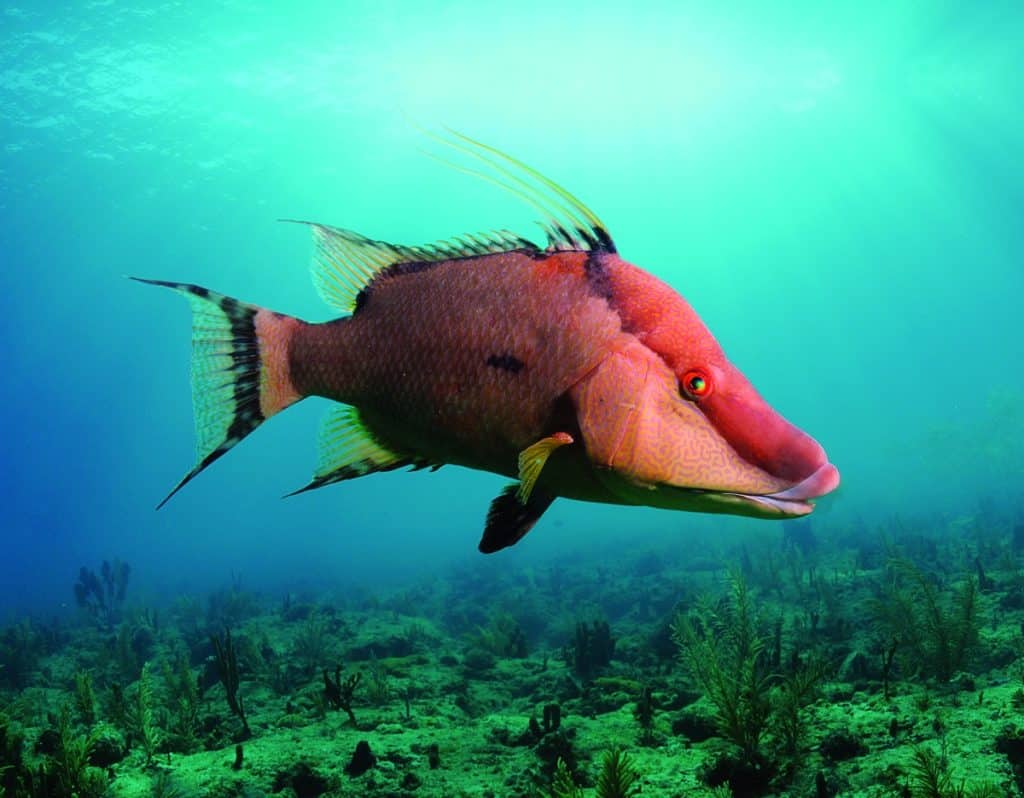
Send us YOUR strange or surprising catches!
